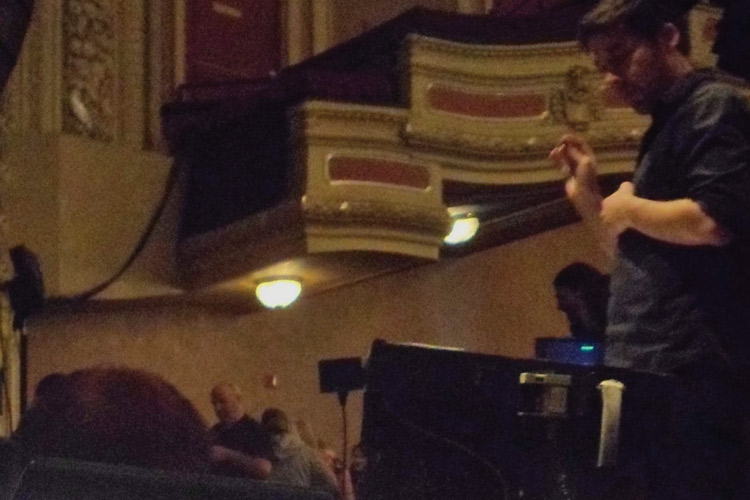The music behind the musical
Below the spectacle and drama on the stage of the Broadway musical, “Wicked,” is a mysterious world.
“It’s a world that people don’t know about or understand,” Andrew Graham, musical director of “Wicked” said.
It is a dark pit filled with artists dressed in black. Only small lights atop of music stands illuminate the pages of notes they interpret. Little screens display the conductor’s image above these pages and computers capture sound from keyboards, but the live music seemed to transcend the technology.
As 14 musicians play, vibrance emanates from their instruments. At moments the intensity of the noise vibrates through the audience’s chairs, while at others, a calm effortlessness flows through the space.
In the orchestra pit, an essential part of musical theater comes to life. Rarely does an outsider have the chance to see it.
However, professor of trumpet and director of jazz studies Robert Baca brought over 25 UW-Eau Claire students, individually, to sit in the orchestra pit for the production of “Wicked” at the Orpheum Theatre in Minneapolis, where he preformed eight times a week.
This was only possible because Graham allowed guests and students to sit in the pit for the musical’s six-week run from Sept. 18 to Oct. 27.
By sitting in the pit, students got the chance to watch the musicians play up close and personal.
“This opportunity is very rare and unique for students to observe a performance right next to their instrument,” Baca said.
Graham Pollack, a senior music education major and trumpet player, said sitting in the pit twice for “Wicked” has made him more familiar with what it’s like to play at such a high level in a professional orchestra, something he said he hopes to do when he graduates.
Looking at the notes on the page of Baca’s music allowed Pollack to see how one musician interpreted the notes to create the most emotion and musical color.
The musician’s job is to make the audience feel something, Baca said.
“When folks participate in the arts as audience members or as creators, they are anticipating an emotional experience,” Baca said.
After hearing it in the orchestra pit for himself, Derek Bruns, a senior trumpet player, said the build-up of the piece at the end of the first half was captivatingly successful in piquing interest for the second half of the show.
As the songs progressed, there was also a high level of focus and concentration among the orchestra. Each musician was intensely fixated on the music and his or her part, looking up for cues from the conductor and only relaxing in the sporadic moments of the show without music.
At the head of the pit, Graham directed the orchestra at which Baca said was exceptional after six weeks of conducting shows.
The community, selflessness and friendship in the pit contribute to this unique environment, Baca said.
“In the moment, nothing can be in the way of intrinsically knowing what those around you are going to do, so we collectively create the best emotional result,” Baca said.
Countless students have experienced the world of the orchestra pit with Baca at numerous Broadway shows over the last 25 years.
Eau Claire alumnus, trumpeter Paul Stodolka, said when he sat in the orchestra pit for “The Phantom of the Opera” in seventh grade, the experience inspired him in a way he’ll never forget.
After becoming a professional musician, Stodolka has strived to emulate Baca by inviting his students to the orchestra pit when he performed for “Shrek the Musical.” He will soon be touring with the Broadway production of “Elf” with his wife, Eau Claire alumna Elizabeth Stodolka.
At the end of another performance of “Wicked” in its final week in Minneapolis, Graham beamed and blew a kiss at the actors on stage as they took their bows, and the orchestra continued to play its final notes. The musicians drifted out of the pit, only to return the next night to bring their passion for music to a new audience.






